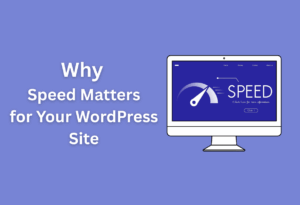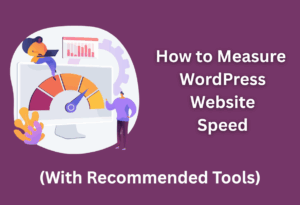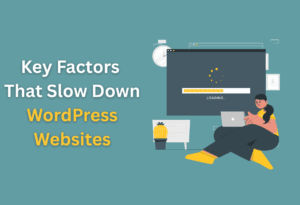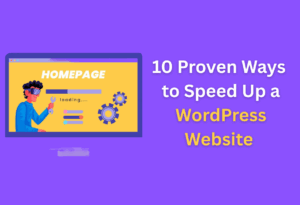Speed is vital for your website’s success, as faster loading times significantly improve user experience and enhance SEO performance. In this blog post, you’ll discover the top 7 page speed plugins designed to optimize your site and reduce loading times effectively. Whether you’re a seasoned developer or a novice, these tools will help you streamline your website’s performance, making it more responsive and engaging for your visitors. Let’s dive in and equip your site with the performance-boosting capabilities it needs!
Importance of Page Speed
Before venturing into the specifics of page speed optimization, it’s crucial to understand how it affects your website’s performance and overall success. Fast-loading pages are not merely a luxury; they are a necessity in today’s digital landscape.
Impact on User Experience
Along with providing valuable content, a smooth and fast user experience is critical for retaining visitors. When your pages load quickly, users are more likely to engage with your site, explore further, and return in the future, enhancing their overall experience.
SEO Considerations
Along with improving user experience, page speed plays a significant role in search engine optimization (SEO). Search engines, such as Google, consider page load times as a ranking factor. If your site is slow, you risk being outranked by faster competitors, which can significantly affect your visibility in search results.
Even slight delays in loading times can alter your site’s rankings, as search engines prioritize delivering the best possible experience to users. Therefore, investing in page speed optimization not only benefits your visitors but also enhances your site’s potential to attract organic traffic.
Conversion Rates
Importance of fast loading times cannot be overstated when it comes to conversion rates. Studies show that users are less likely to complete desired actions, such as making a purchase, if they experience delays while navigating your site.
Understanding this correlation allows you to prioritize speed optimization as a means to boost your conversions. Your potential customers expect high-performance websites and can easily abandon a purchase if they encounter lag. By ensuring your pages load quickly, you create a more inviting atmosphere that encourages users to follow through with their purchases or engagements.
Key Features of Page Speed Plugins
Any website owner understands the significance of fast loading times. To optimize your site effectively, it’s necessary to utilize page speed plugins that offer various features. Here’s a detailed list of key features to look for:
- Caching mechanisms to store static versions of your pages
- Image optimization tools for compressing and resizing images
- Minification and compression of CSS and JavaScript files
- Content Delivery Network (CDN) integration for faster asset delivery
- Lazy loading for images and videos to improve initial load time
- Database optimization to enhance server performance
- User-friendly interface for easy setup and management
Perceiving these features is vital for making informed decisions on the best tools to improve your website’s performance.
Caching Mechanisms
About caching mechanisms, these functionalities allow your website to store copies of static pages. By avoiding repetitive database queries for each user request, caching significantly speeds up loading times and reduces server load.
Image Optimization
Image optimization is necessary for website performance. Image files can consume substantial bandwidth, impacting your site’s load time if not managed correctly.
At the same time, high-quality visuals are necessary for engaging your audience. This is where image optimization comes into play, allowing you to compress images without losing quality, thus maintaining both aesthetics and performance.
Minification and Compression
Features of minification and compression work together to streamline the code of your website. This process involves removing unnecessary characters, spaces, and comments from CSS, JavaScript, and HTML files.
And by shrinking file sizes, these techniques reduce data transfer time, leading to faster loading speeds. Implementing minification and compression can provide a noticeable improvement in overall site performance.
Content Delivery Network (CDN) Integration
An effective CDN integration can distribute your website’s content across multiple servers worldwide. This ensures that users load assets from the nearest server, reducing latency and enhancing speed.
With a CDN, your website can efficiently handle traffic spikes, delivering a seamless experience for your users regardless of their geographic location. This not only improves load time but can also enhance your site’s overall reliability.
Overview of the Top 7 Page Speed Plugins
All website owners understand the importance of page speed for enhancing user experience and improving SEO rankings. In this section, you will discover the crucial features of the top seven plugins that can facilitate faster loading times for your website.
Plugin 1: WP Rocket
Around the web, WP Rocket is celebrated as one of the most effective caching plugins. With its user-friendly interface, you can quickly enable various optimization options to boost your website’s performance without diving deep into complex settings.
Plugin 2: W3 Total Cache
Against the competition, W3 Total Cache stands out for its comprehensive performance-enhancing features, catering to both beginners and experts. This free plugin offers powerful caching solutions that can significantly improve your site’s loading times.
For instance, W3 Total Cache supports CDN integration, which allows you to serve your website’s static content from multiple geographical locations, resulting in quicker load times for users from different regions.
Plugin 3: WP Fastest Cache
Before venturing into technical details, WP Fastest Cache provides an outstanding balance between speed and simplicity. This plugin is perfect for those who want results without the hassle of complicated configurations.
To gain even more benefits, you can explore its features like minification and gzip compression, which further reduce file sizes and enhance loading speed, making your user experience smoother than ever.
Plugin 4: Autoptimize
Rocket in its functionality, Autoptimize is designed to optimize your website’s HTML, CSS, and JavaScript code with simplicity and efficiency. It’s an excellent choice if you want to streamline your site’s code without extensive knowledge.
Page loading times improve dramatically as Autoptimize minimizes and concatenates files, reducing the number of HTTP requests. This means your site will have a more efficient loading process, keeping visitors engaged.
Plugin 5: LiteSpeed Cache
Plugin performance varies, but LiteSpeed Cache is a standout for websites using LiteSpeed servers. This versatile plugin combines caching and optimization features seamlessly to enhance your page speed significantly.
Plugins like LiteSpeed Cache offer unique server-level caching, allowing for faster data processing and improved site performance. Its compatibility with various platforms and features makes it a reliable choice for optimizing your website.
Plugin 6: Hummingbird
The Hummingbird plugin stands out for its comprehensive performance monitoring tools. It’s designed to help you pinpoint issues affecting your website speed, ensuring that you can make informed adjustments as needed.
Understanding how to utilize Hummingbird’s features, such as file compression and caching, will enable you to customize your performance strategy effectively. By analyzing and implementing suggestions, you can achieve remarkable improvements in loading times.
Plugin 7: SG Optimizer
Optimizer in its essence, SG Optimizer is engineered specifically for SiteGround hosting users. It focuses on delivering maximum speed enhancements for websites hosted on this platform.
At the core of SG Optimizer’s capabilities are built-in caching systems and optimization features that simplify the process of achieving faster loading times. Its user-friendly interface ensures you can easily leverage these tools to improve your site’s performance significantly.
How to Choose the Right Plugin
Many website owners find themselves overwhelmed by the plethora of options available. Selecting the right page speed plugin is imperative to enhance your site’s performance effectively. By evaluating your website’s needs, compatibility with existing themes and plugins, and understanding performance testing tools, you can make an informed choice that aligns with your goals.
Assessing Your Website Needs
Website performance can be influenced by multiple factors, including the type of content you host and your target audience. Start by identifying specific areas that require improvement. Are you facing slow loading times due to high-resolution images or excessive JavaScript? By pinpointing your unique requirements, you can select a plugin that specifically addresses those issues.
Compatibility with Existing Themes and Plugins
Across the vast array of website frameworks, ensuring compatibility with your current themes and plugins is vital for seamless integration. You want a solution that enhances your site’s speed without causing conflicts or disruptions in performance. Therefore, checking user feedback and plugin documentation will help you gauge compatibility.
Considering how many themes and plugins vary in coding practices, it’s wise to conduct thorough research before committing to a particular speed plugin. Look for options that provide details regarding compatibility, and consider reaching out to the plugin developers if you have specific inquiries. Testing is also valuable; ensure that the plugin functions well within your site’s existing setup, making adjustments as necessary.
Performance Testing Tools
After you have narrowed down your options, it’s beneficial to assess page loading times using performance testing tools. These tools will help you measure the current state of your site and identify the areas that need improvement, which can inform your final decision.
Assessing your website’s performance through these tools allows you to track the impact of any changes you make. Tools like Google PageSpeed Insights, GTmetrix, and Pingdom provide valuable insights and actionable recommendations. By using these metrics, you can better evaluate the effectiveness of your chosen page speed plugin and ensure it contributes positively to your site’s overall performance.
Best Practices for Using Page Speed Plugins
Unlike many other website enhancements, optimizing your page speed plugins requires a strategic approach. Implementing best practices will ensure that you get the most out of your selected tools and significantly improve your website’s loading times.
Regular Updates and Maintenance
Best practice dictates that you keep your page speed plugins updated to their latest versions. Developers frequently release updates that address bugs, provide security enhancements, and improve overall functionality. By staying current, you ensure that your website leverages the best performance improvements available.
Monitoring Performance Regularly
Below, you’ll find that consistently tracking your website’s performance is crucial for ensuring speed optimizations remain effective. Regular monitoring allows you to identify any dips in performance and assess the impact of any changes you’ve made to your plugins or overall website design.
Page speed can fluctuate due to various factors, including increased traffic, software updates, or changes in your site’s content. By running performance tests monthly or before and after any significant updates, you can pinpoint issues early and adjust your strategy accordingly, ensuring consistently fast loading times for your visitors.
Dealing with Conflicting Plugins
One of the challenges you may face is conflicts between various plugins that can lead to performance issues. When using multiple optimization tools, make sure they complement rather than hinder each other’s capabilities.
Regular checks on your website should include looking for unexpected slowdowns. If you encounter loading issues, consider disabling one plugin at a time to isolate the problem. This method can help you identify which plugins work well together and which ones need adjustment or removal, ultimately contributing to a faster, smoother experience for your users.
Beginner’s Guide to Setting Up Page Speed Plugins
Now, the world of website performance can feel overwhelming, especially for beginners. By utilizing page speed plugins, you can significantly improve your website’s loading times without requiring a deep understanding of code. This guide will help you set up these plugins effectively for optimal results.
Installation Process
With just a few clicks, you can install a page speed plugin on your website. First, navigate to your WordPress dashboard, then head to Plugins > Add New. Once there, search for your chosen page speed plugin, click ‘Install Now,’ and finally, activate it to get started.
Configuring Basic Settings
Page speed plugins typically come with default settings that work well. However, you’ll want to customize these settings to match your website’s needs. This often involves choosing the features you want to activate, like caching and minification.
The configuration process can vary slightly depending on the plugin you choose, but typically, you should focus on enabling caching options, setting up a CDN (Content Delivery Network), and optimizing images. These changes can lead to noticeable improvements in loading speed, enhancing user experience on your website.
Advanced Optimizations
Speed testing does not stop at basic configurations. Advanced optimizations can further enhance your website’s speed and responsiveness. You can explore the following areas:
| Lazy Loading of Images | Load images only when they become visible to the user. |
| Database Optimization | Clean up your database to reduce overhead. |
| GZIP Compression | Compress files to decrease their size before transfer. |
| Defer JavaScript Loading | Delay the loading of JavaScript until after page content is visible. |
Consequently, implementing advanced optimizations can lead to remarkable enhancements in your website’s performance. Make sure to review your site’s needs and analyze the best options to make an impactful difference. Here are some advanced features you should consider enabling:
- Enable browser caching.
- Optimize CSS delivery.
- Eliminate render-blocking resources.
- Utilize a content delivery network (CDN).
By systematically addressing both the basic and advanced settings, you’re taking significant steps towards achieving optimal page speed for your website.
Conclusion
Presently, enhancing your website’s loading speed is important for improving user experience and boosting SEO rankings. By utilizing one of the top 7 page speed plugins discussed, you can effectively optimize your site’s performance. Each tool offers unique features tailored to different needs, allowing you to choose the best fit for your website. Implementing these plugins will lead to a faster, more responsive site that keeps your visitors engaged and improves conversion rates, making your online presence even more impactful.





